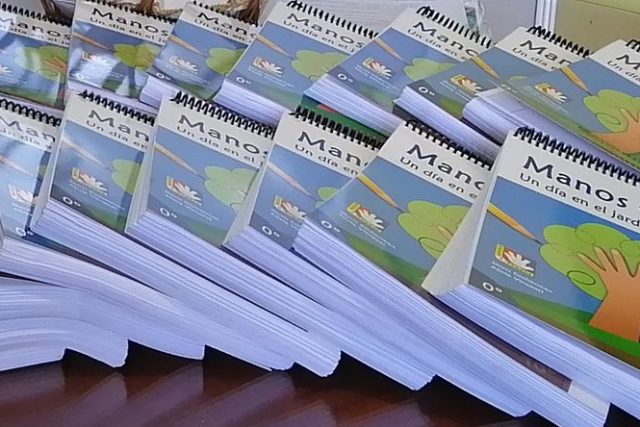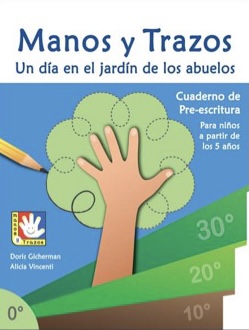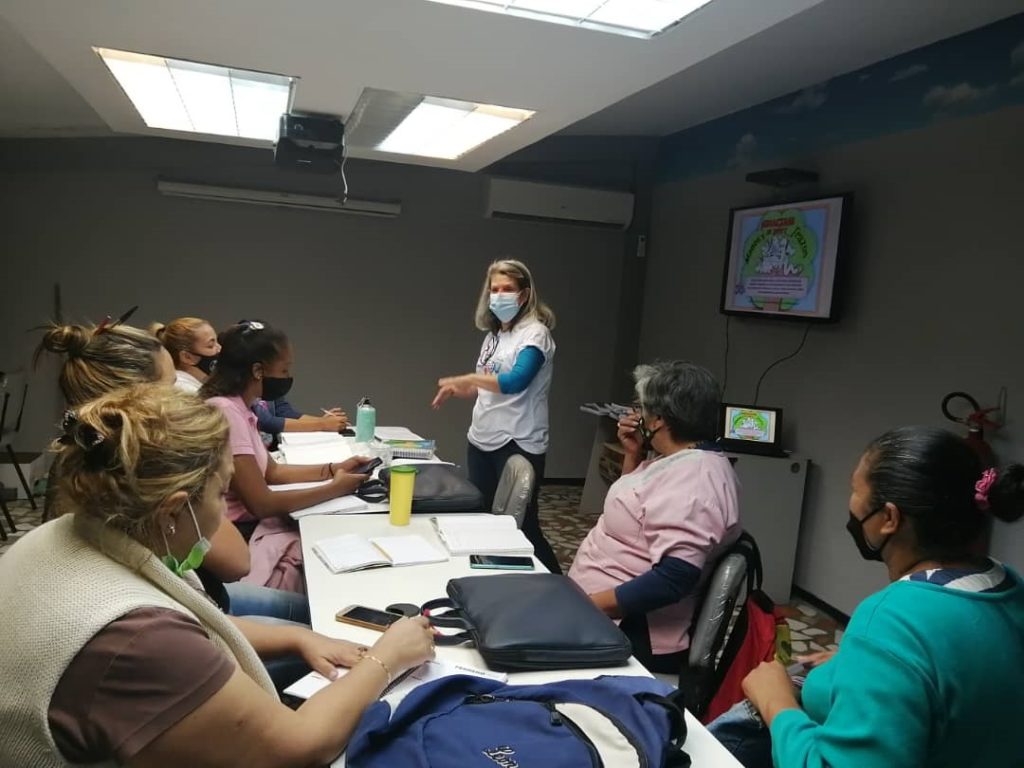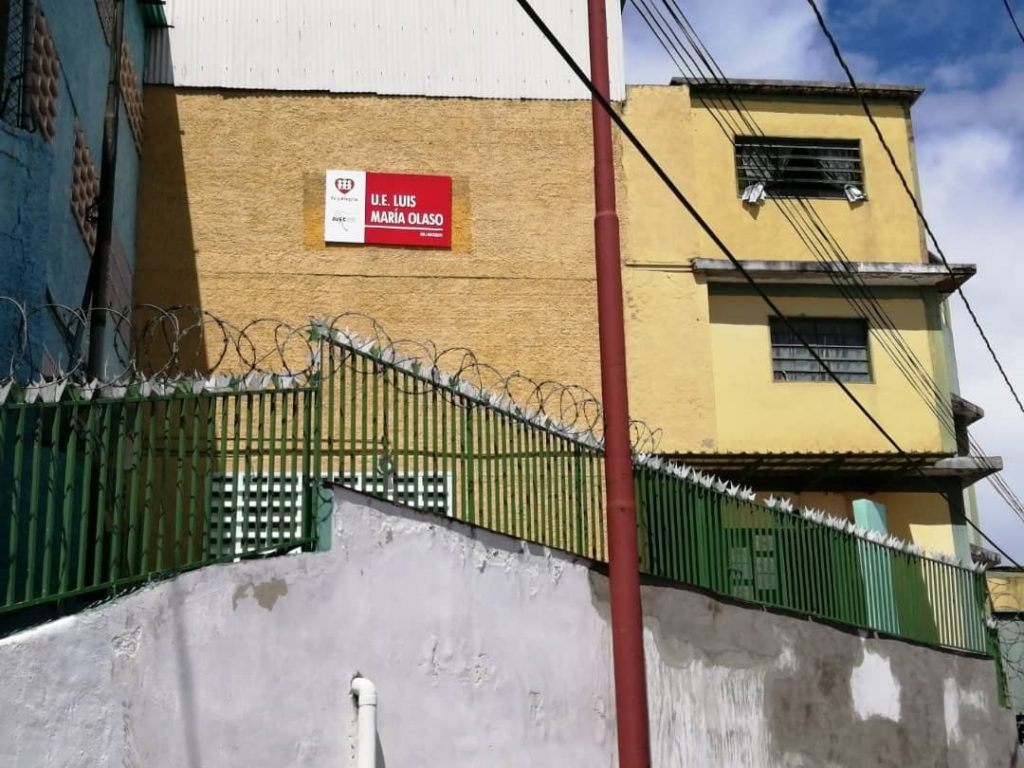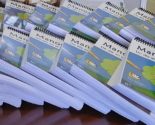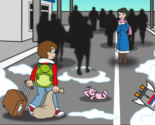Estimated reading time: 9 minutes
We conversed with Alicia Vincenti Pimentel, co-author of the activity book for literacy Manos y trazos.
First of all, I would like to express my gratitude for this opportunity to talk about a project that is so close to my heart. A completed project is rarely the result of an individual initiative nor published as it was devised in the beginning; Manos y trazos is no exception. What was initially intended as a pedagogic tool to address the needs of left-handed children with motor and literacy difficulties, ended up widening its target as a didactic resource and has even sought to widen its social scope, so that it could also be accessible to less privileged children in Preschool Education.
Manos y trazos could be defined as a comprehensive pre-writing drill book designed for the preparatory and first stages of the literacy process that take place at the third level of Preschool Education. Its target is left-handed and right- handed children from the age of 5.
Obviously, the final product would have never been reached without the effort and dedication of all the people involved in every stage of the project. Therefore, in addition to thanking God, I must express my gratitude to my partner, Ms. Doris Gicherman and graphic designers Yusmary Aponte and Nelson López for their high-level personal and professional support.
In the current challenging Venezuelan context, I feel that being able to reach the production stage of this editorial project has been a privilege – a learning experience that others only envision in their dreams.
Lefties also count
Why develop a learning tool especially for left-handed children?
The motor and cognitive difficulties faced by children whose laterality is opposite to the orientation of the writing system itself (as well as to many everyday tools) have historically been neglected; their particular needs tend not be considered when literacy materials are designed. Moreover, little thought has been given to the possible long-term negative consequences resulting from the incorrect positions adopted by left-handers in order to adapt to a world created by and for right-handers, including how the frequent motor and cognitive problems arising from these adaptation difficulties and the ensuing stigmatization affected them psychologically.
Not all left-handers experience adaptation difficulties, but although they are a minority they have the right to be considered and to have materials and tools created that are totally or partially dedicated to them. Though in many countries today there are numerous resources adapted for left-handers, this is not the case in Venezuela and some other Spanish-speaking countries. Parents, teachers and educational psychologists find it necessary to import materials or spend time creating their own resources.
Sheer ignorance, combined with economic and market reasons have played an important role in the marginalization of the left-handed population. Given our market configuration, the original project was substantially changed in order to address all the subjects included in the 3rd level of Preschool Education, both for left-handed and right-handed users, so as to make the book more feasible and profitable. Hence, it wouldn’t be accurate to rate Manos y trazos as a tool dedicated solely to left-handers.
“Manos y trazos benefits the family economy” by making the purchase of guides for other subjects unnecessary. It’s like having 7 books in one”. Just more of the same?
Wouldn’t you say that including right-handed users in your target turns Manos y trazos into a book that hardly differs from existing learning materials in the L.A. market?
I’d say that the originality of Manos y trazos does not lie in the kind of exercises it offers, as it contains many types of activities that are traditionally seen in pre-literacy and literacy training materials for this level. Rather, it lies, first of all, in adapting a portion of the traditional exercises for left-handed children, without affecting right-handed kids. Also, in the inclusion of other activities in addition to calligraphy drills and in the way all the exercises are interrelated in a ‘pre-school encyclopedia’ that fills the gap in the teaching materials market for this level in Venezuela and also some other Latin American countries. In its final version, the book includes more than 300 pages with calligraphy, drawing and literature activities as well as craft projects and an introduction to mathematical concepts, which build attention span and contribute to cognitive development, gross and fine motor skills and teach children their mother tongue, all presented with an emphasis on fun. In this sense, Manos y trazos is a comprehensive, versatile book for prolonged use, which is why, as Mirna Parés rightly states in the final sentence of the introduction, “Manos y trazos benefits the family economy”, by making the purchase of guides for other subjects unnecessary. It’s like having 7 books in one.
A more inclusive education system
In your opinion, would you say that there is unquestionable evidence that the brains of lefties work differently?
I don’t have enough information to answer that question. Despite an abundance of studies and assumptions regarding the differences between left-handers and right-handers, the functioning of the brain is so infinitely complex that I think it is very difficult to determine for sure whether left-handers and right-handers are radically and essentially different. We would have to start by asking how right-handers would manage if everything, including the writing system and utensils, were made by and for lefties. It would possibly be very useful to determine whether we function differently, but not in order to decide whether or not we are smarter or more creative or more rebellious, or whether we have cognitive impairment.
Such knowledge would surely expand the options of exercises and pedagogical help to ease or even put an end to the difficulties of the left-handed child when it comes to the writing system and the right-handed world in general. That should be our goal, although perhaps it would also end up deepening discrimination in some fields.
Current situation in Venezuela
What do you think about the situation of education in Venezuela?
It is a situation with many facets. The pandemic has only deepened the decay of the education system, which was already afflicted with problems, such as the deterioration of public facilities and services, the high costs of private education, the low salaries of teachers, the increasingly limited supply of teaching resources and vocational training possibilities, the shifting of teachers to other fields of work, and the malnourishment of children amid terrible economic conditions. How long this situation will continue remains to be seen.
However, a teacher is obliged to be optimistic and to believe in the students who are entrusted to him/her. I’m not saying it’s an easy task… It has been two years marked by a high dropout rate, lack of the necessary face to face contact with the students and having to improvise teaching strategies in the face of an unforeseen change and a strange and overwhelming reality.
Education is built on values such as hope and confidence in the future. If we fail to sell the students the idea that what they are learning in school will help them carve out a better future, how else do we encourage them to study, to perform and to graduate? To me, values are at the very core of the education system crisis.
What is the purpose of the campaign “Donate a Manos y Trazos Book and Help Equip a School with Reduced Resources in Venezuela?
The main goal when publishing a book is that it is known and used for the purposes for which it was created. The campaign “Donate a Manos y Trazos book ” not only allows us to fulfill this goal, but also to use teacher feedback to cement it as a didactic resource.
In a market that is depressed and low in teaching materials, such initiatives allow people with little purchasing power to have access to quality material.
In this sense, Manos y trazos fulfills a social task, by helping schools in deprived areas. So far we have equipped the Third Level groups of Initial Education at the U.E. Luis María Olaso, in Caracas.
But this little contribution is just the beginning. That is why we’d like to invite potential book donors to join this initiative, and to encourage schools with reduced resources to inform us of their interest in using this material. Finally, we would like to invite parents, teachers, educational psychologists and homework teachers to contact us, so that we can send them information and answer their questions about the book.
Want to help?
And how can you join?
Simply email Alicia Vincenti at manosytrazos@gmail.com to either purchase materials or donate, both from abroad and in Venezuela. You will be sent information about the book and how to purchase or donate. Thank you very much, in advance, for your support.
- Manos y trazos: Más de 300 páginas de educación inclusiva
- Magical Realism with Marie-Thérèse Ross
- Is the patriarchal hierarchy in Turkey a threat for transgenders?
- From Venezuela to Australia – an artistic renaissance for Jorge González
